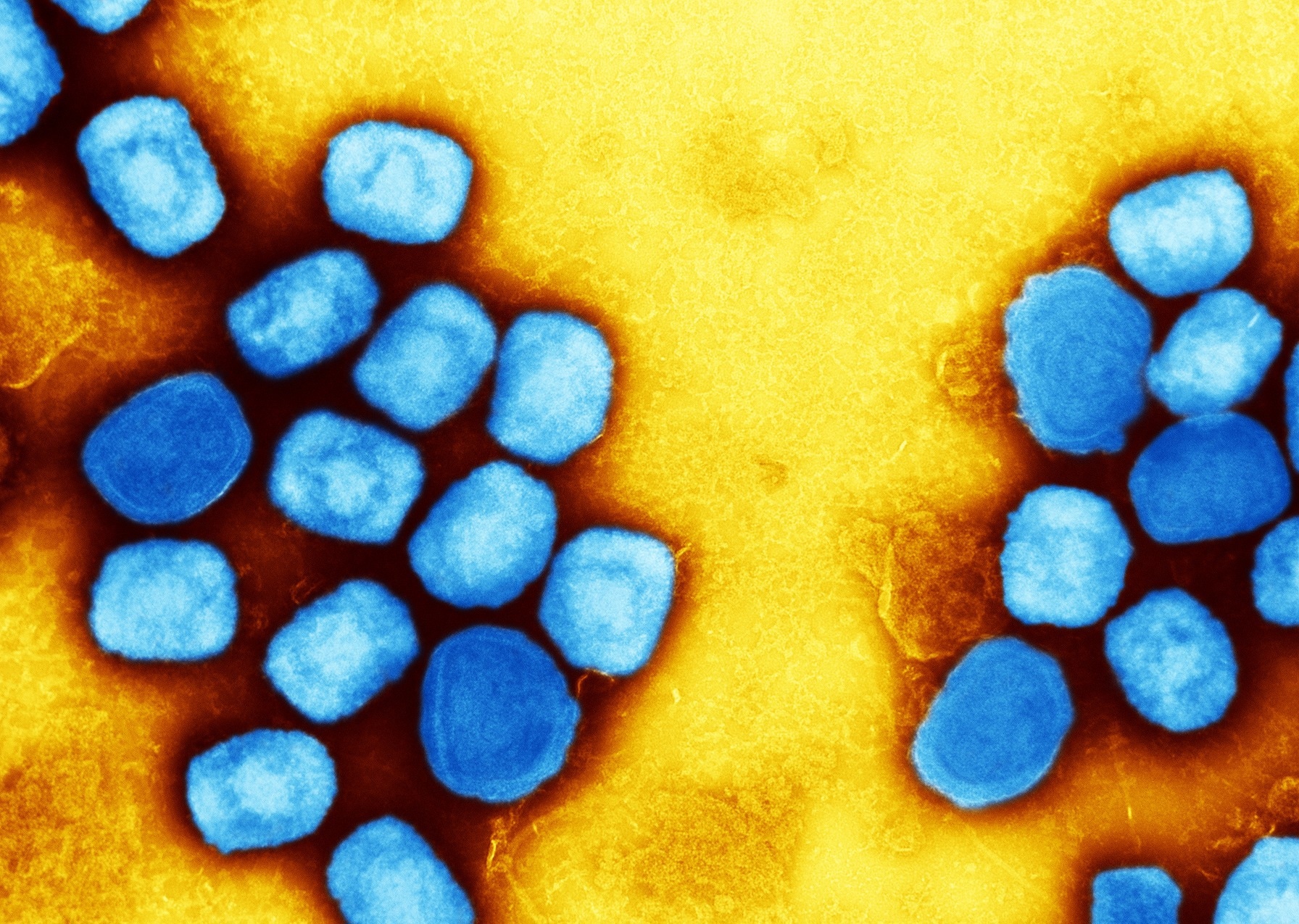In a recent study posted as an accepted manuscript in the journal Clinical Infectious Diseases, researchers from the University of Oklahoma described three drugs with antiviral activity against the monkeypox virus (MPXV).
Human monkeypox (hMPX) is a zoonosis caused by MPXV, a double-stranded (ds) DNA virus member of the Orthopoxvirus genus. The first case of hMPX was reported in 1970 in the Democratic Republic of Congo. Multiple outbreaks have occurred in West and Central Africa, with occasional outbreaks in North America and Europe.
Genomic investigations have uncovered the existence of two clades of MPXV: the Congo Basin (CB) and West African (WA) clades. Managing MPXV infections has primarily been supportive care; however, antiviral drugs such as brincidofovir and tecovirimat have opened new therapeutic avenues.
More than 25,000 confirmed cases of hMPX have been identified in 83 countries until August 2nd, 2022. Preliminary evidence indicates that the WA clade is associated with the ongoing outbreak. Most cases have been reported in the United Kingdom (UK), Germany, and Spain. In the present review, researchers described three antiviral drugs: brincidofovir (BCV), tecovirimat (ST-246), and cidofovir (CDV), acting against MPXV.
 Study: Antivirals with Activity Against Monkeypox: A Clinically Oriented Review. Image Credit: NIAID
Study: Antivirals with Activity Against Monkeypox: A Clinically Oriented Review. Image Credit: NIAID
Cidofovir
CDV is a prodrug and phosphorylated upon cell entry by host enzymes to active CDV-diphosphate (CDV-pp). The active drug incorporates into the growing (viral) DNA strand during replication and slows DNA synthesis. CDV resistance has also been characterized. CDV-resistant strains are less virulent than wild-type strains, implying that CDV resistance develops slowly and occurs at the expense of viral fitness.
Pharmacokinetic data suggest that the drug has poor oral absorption and is available as intravenous infusions. The efficacy of CDV has been evaluated in multiple animal models. Most studies assessed the use of CDV at the time of or shortly after viral exposure, and it remains unclear how animal findings correlate with the timeline of human infection.
CDV has been used in humans for treating infections with poxviruses. Case reports revealed the use of intravenous CDV in a multipronged approach for ocular cowpox. Its combined use with ST-246 has been documented in a patient with eczema vaccinatum. Topical CDV has been used in children and adults for treating molluscum contagiosum. Typically, lesions become acutely inflamed following CDV application but resolve dramatically.
Brincidofovir
BCV, a lipid-conjugated analog of CDV, was approved for treating smallpox in 2021. BCV, like CDV, exhibits broad activity against dsDNA viruses. Unlike CDV, BCV readily enters host cells because of its lipophilic nature. BCV is hydrolyzed into CDV by phospholipases and phosphorylated into the active form (CDV-pp).
Higher levels of CDV-pp are noted after BCV administration, given its higher efficiency in crossing cellular membranes. Cross-resistance to CDV and BCV is possible. Preliminary studies in humans reported the absorption of oral BCV in the fasting state, with lower peak levels of plasma CDV. Besides, higher penetration of BCV into the spleen, liver, and lungs has been observed.
The prairie dog model for MPXV has a similar infection course as in humans. In these dogs, BCV improved survival when administered shortly after MPXV exposure, indicating that early treatment is essential for efficacy.
Tecovirimat
ST-246 was approved for smallpox treatment in 2018. The drug acts against orthopoxviruses but not against other dsDNA viruses. ST-246 targets the gene encoding p37, a conserved membrane protein involved in the formation of the extracellular enveloped virus. ST-246 does not inhibit protein/DNA synthesis or the formation of the mature virus.
Drug resistance could occur by a single amino acid change, albeit it remains unknown whether this genetic change in p37 results in fitness disadvantage to orthopoxviruses. ST-246 demonstrated activity against vaccinia virus strains resistant to CDV; besides, there is no evidence of cross-resistance to ST-246 and CDV/BCV.
ST-246 is available in oral and intravenous formulations. It has superior absorption when administered in the fed state. It has been effective against MPXV in macaques and prairie dogs. Administering ST-246 within 72 hours of exposure to poxvirus was efficacious in reducing lesion severity and preventing mortality in different animal models.
Co-administration of ST-246 and BCV results in synergistic activity. For instance, in cowpox-infected mice, the combination therapy was associated with lower mortality compared to treatment with individual drugs. ST-246 has been used for orthopoxvirus treatment in select humans, including for MPXV treatment in two cases.
In one of the patients, the oral course was started five days after the onset of rash for two weeks. The patient recovered completely without any complications and was discharged. Detailed information about the other patient is limited except for the complete recovery.
Concluding remark
In summary, CDV, BCV, and ST-246 exhibit activity against MPXV. CDV and BCV inhibit DNA replication and exhibit broad activity against different dsDNA viruses. In contrast, ST-246 is much more specific for orthopoxviruses and prevents the formation of the enveloped virus, which is essential for cell-cell transmission.
Overall, ST-246 and BCV could be promising therapeutic candidates based on their tolerability profiles. Further studies are required to identify those at higher risk for MPXV and associated complications and determine the optimal initiation time and duration for therapy.